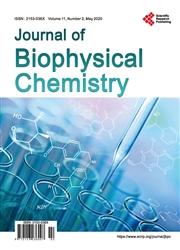Molecular Modelling of Human Multidrug Resistance Protein 5 (ABCC5)
引用次数: 4
Abstract
Multidrug resistance protein 5 (MRP5/ABCC5) is a 161 kDa member of the super family of ATP- binding cassette (ABC) superfamily of transmembrane transporters that is clinically relevant for its ability to confer multidrug resistance by actively e?uxing anticancer drugs. ABCC5 has also been identified as an efflux transporter of cGMP (cyclic guanosine monophosphate). Elevated intracellular levels of cGMP in cancer cells have been implicated in several clinical studies, that may induce apoptosis, and as a result many different cancer cells seem to overcome this deleterious effect by increased efflux of cGMP through ABCC5. Thus inhibition of ABCC5 may have cytotoxic effects mediated through cGMP and it will also increase the intracellular concentration of other drugs that are aimed for the treatment of cancer which are otherwise exported out of the cells. Considering the functional importance and lack of X-ray crystal structure of ABCC5, present work was undertaken to construct 3D structure of protein using homology modeling protocol of YASARA structure (V. 16.3.28). In this study, five different ABC templates (PDB ID’s: 4F4C, 4Q9H, 4M1M, 4M2T and 4KSD) were used for homology modeling. Five models were constructed on each template and a hybrid model was built using all five templates. All models were refined and ranked as per their overall Z-score. The top ranked ABBC5 model was based on template 4Q9H that had 91.2% of residues in allowed regions as revealed by PROCHECK-NMR and the QMEAN score was 0.54 which indicated a reliable model. The results of the study and the proposed model can be further used for elucidating the structural and functional aspects of ABCC5 and to gain more insights to the molecular basis of ABCC5 inhibition through docking studies.人多药耐药蛋白5 (ABCC5)的分子模拟
多药耐药蛋白5 (MRP5/ABCC5)是ATP结合盒(ABC)跨膜转运蛋白超家族的一个161 kDa成员,其通过主动e?使用抗癌药物。ABCC5也被确定为cGMP(环鸟苷单磷酸)的外排转运体。在一些临床研究中,癌细胞细胞内cGMP水平升高可能会诱导细胞凋亡,因此许多不同的癌细胞似乎通过ABCC5增加cGMP的外排来克服这种有害影响。因此,抑制ABCC5可能具有通过cGMP介导的细胞毒性作用,也会增加其他用于治疗癌症的药物在细胞内的浓度,否则这些药物会被输出到细胞外。考虑到ABCC5的功能重要性和x射线晶体结构的缺失,本研究采用YASARA结构(V. 16.3.28)的同源建模协议构建蛋白质的三维结构。本研究使用5种不同的ABC模板(PDB ID: 4F4C、4Q9H、4M1M、4M2T和4KSD)进行同源性建模。在每个模板上构建了五个模型,并使用所有五个模板构建了混合模型。对所有模型进行了改进,并根据其总体z分数进行了排名。排名第一的ABBC5模型基于模板4Q9H, PROCHECK-NMR显示4Q9H在允许区域有91.2%的残基,QMEAN评分为0.54,表明该模型可靠。本研究结果和提出的模型可进一步用于阐明ABCC5的结构和功能方面,并通过对接研究进一步了解ABCC5抑制的分子基础。
本文章由计算机程序翻译,如有差异,请以英文原文为准。
求助全文
约1分钟内获得全文
求助全文

 求助内容:
求助内容: 应助结果提醒方式:
应助结果提醒方式:


